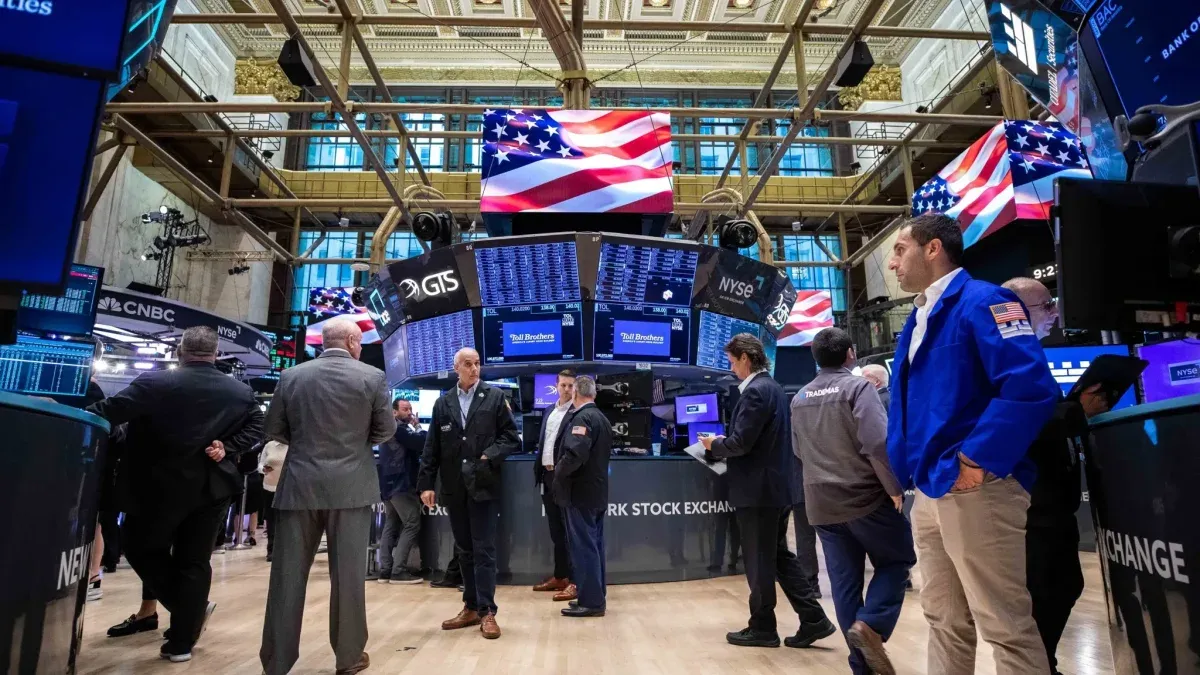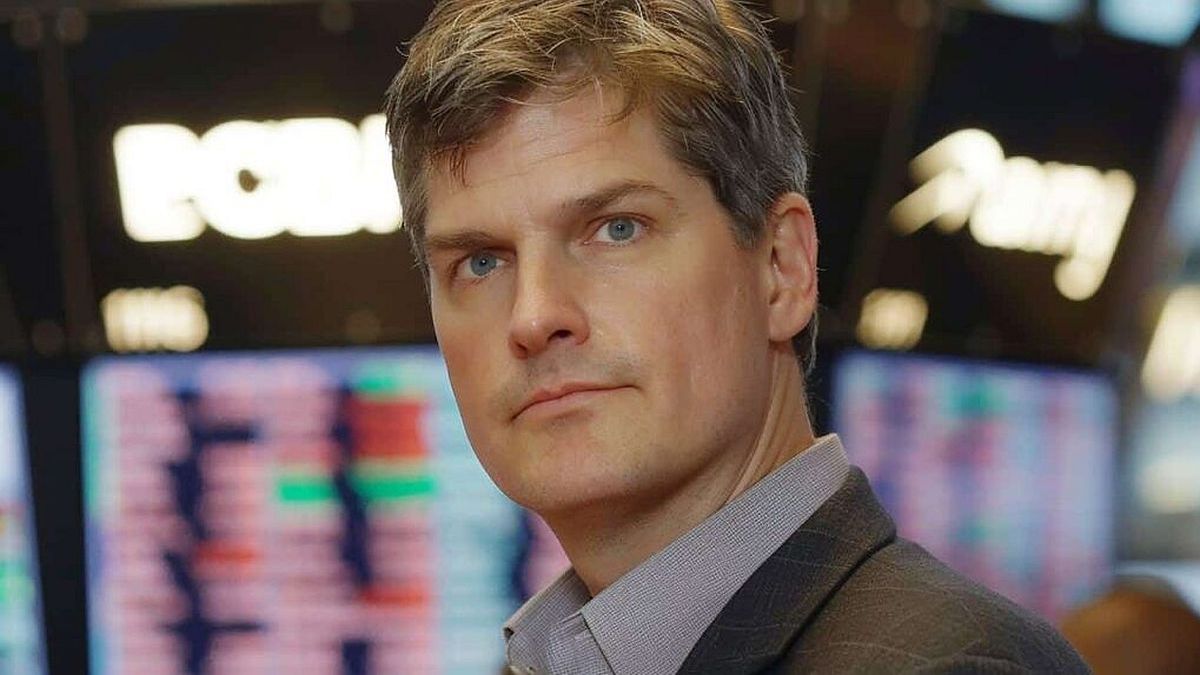The three benchmark indices of the New York Stock Exchange fell significantly this Mondayweighed down by profit-taking as the end of a largely positive 2024 approaches. But it must also be taken into account that the main indices will close 2024 near record levels, with the S&P 500 and the Dow Jones rising more than 23% and 14%, respectively, and on track to be the best year since 2021. The Nasdaq has gained about 30%.
In this context, the Dow Jones Industrial Average fell 0.97% to 42,573.73 points; The S&P500 lost 1.07% to 5,906.94 points and the Nasdaq Composite depreciated 1.19% to 19,486.79 points.
Fed to cut rates in March, says Goldman
Monday’s list of economic data includes pending home sales for November, as well as the Chicago Economic Indicator (PMI) for December, but activity is likely to be limited as the market is closed on Wednesday.
Later in the week, investors will closely analyze the December Institute for Supply Management manufacturing activity survey and a weekly report on jobless claimsahead of a key report on the job that will be published next week.
Goldman Sachs forecasts that the Federal Reserve will implement its next 25 basis point interest rate cut in March 2025. The bank said in a note Friday that the move is expected to be followed by two additional cuts of the same magnitude in June and September. “We expect the Fed to deliver its next 25 basis point cut in March, followed by two more 25 basis point cuts in June and September to a terminal rate range of 3.5-3.75%,” the bank wrote. Goldman also anticipates that the Fed will slow its balance sheet reduction in January 2025 and stop it completely in the second quarter.
What happened to Wall Street stocks?
Boeing shares fell more than 2.6% after a devastating plane crash in South Korea claimed the lives of 179 people on Sunday, when a passenger plane crashed at Muan International Airport. The plane, a Boeing 737-800, skidded off the runway, hit a wall and burst into flames, making it the deadliest aviation disaster in the country’s history.
Among the actions that have lost value to date, we highlight Tesla Motors (-2.1%), Avago Technologies (-2.4%), Xpeng Inc (-5.5%) and Li Auto Inc., (-4.3%). Among the appreciated stocks we mention Antero Rsrc (+7.99%), ST:EQTAB (+5.8%) and Cabot Oil & Gas (+4.1%) and Encana Corporation (+3.7%) and Comstock Resources Inc +33.44% .
Jerome Powell, the strategist
According to economists, Federal Reserve Chairman Jerome Powell is in familiar territory heading into 2025.where its objective is to balance the independence of the central bank and avoid confrontation with Donald Trump. Powell’s challenge lies in managing monetary policy without appearing to be preemptively neutralizing potential inflationary pressures from the incoming administration’s policies.
The balancing act has been evident in recent months. Shortly after Trump’s election victory in November, Powell emphasized “that the Fed would not speculate on how future policies might influence interest rates.” “We don’t guess, we don’t speculate, and we don’t assume,” Powell said Nov. 7.
However, The Fed’s latest projections suggest that some officials are already considering policy changes, indicating fewer rate cuts in 2025 due to inflation concerns. Last week, the Fed cut rates by a quarter point, completing a one percentage point reduction since September.
Despite this, the updated forecasts revealed a more cautious stance on easing. Most officials now predict just two cuts next year, down from the four projected in September. Inflation is expected to remain at 2.5% in 2025, up from previous forecasts of 2.2%.
It should be noted that 15 of the 19 Fed officials see a risk that inflation could exceed projections. Michael Gapen, chief U.S. economist at Morgan Stanley, noted the change.
The last meeting “turned out to be much more aggressive than we thought because they did what they said they weren’t going to do: they said they weren’t going to speculate on policy and then a month later they decided to speculate on policy,” said. A key factor behind this caution is Trump’s proposed economic agenda, which includes tariffs and stricter immigration policies. Tariffs could drive up prices, while stricter border controls could restrict labor supply, raising wages.
Powell has downplayed the direct impact of Trump’s election on inflation forecasts, attributing the change to recent inflation data. Despite this, according to the Wall Street Journal, Powell has privately advised colleagues to tread carefully in their public statements to avoid perceptions of political bias. This approach aligns with the top official’s efforts to maintain the Fed’s reputation for making data-driven, apolitical decisions. There is a lot at stake.
Powell recalls the Fed’s experience during Trump’s first term, when trade wars led to rate cuts. However, the current environment is different. Inflation has been high, unlike the low inflation backdrop of 2018. Powell highlighted this distinction in his Dec. 18 press conference, referencing previous internal Fed analysis. “What the committee is doing now is discussing pathways and understand again the ways tariffs can affect inflation and the economy,” Powell said.
“It puts us in a position, when we finally see what the actual policies are, to make a more careful and thoughtful assessment of what the appropriate policy response might be.” Trump’s advisers argue that deregulation and increased energy production could offset inflationary risks. Treasury Secretary-designate Scott Bessent downplayed the concerns. Still, analysts believe the Fed will respond cautiously if supply-side improvements reverse. “In this environment, we are not coming from six years of inflation below the target. We are coming off a few years of being well above the target,” says JPMorgan chief economist Michael Feroli. Other analysts suggest that the economic environment will significantly influence the extent to which companies pass on rising costs to consumers.
Source: Ambito
I am Pierce Boyd, a driven and ambitious professional working in the news industry. I have been writing for 24 Hours Worlds for over five years, specializing in sports section coverage. During my tenure at the publication, I have built an impressive portfolio of articles that has earned me a reputation as an experienced journalist and content creator.




